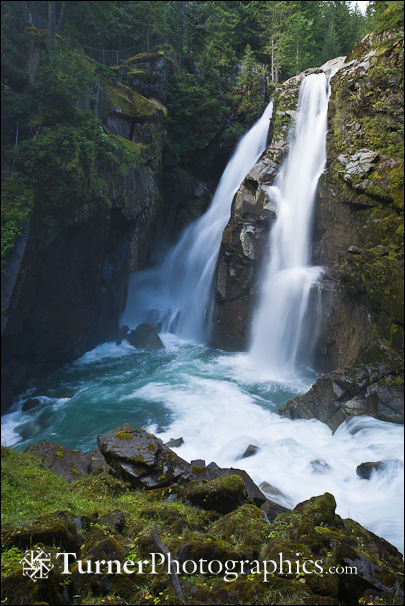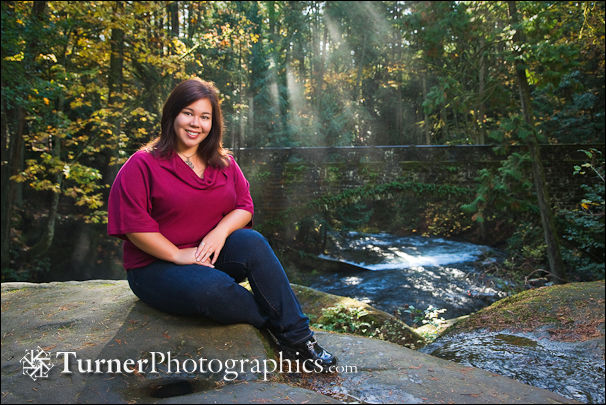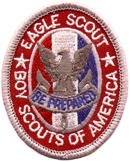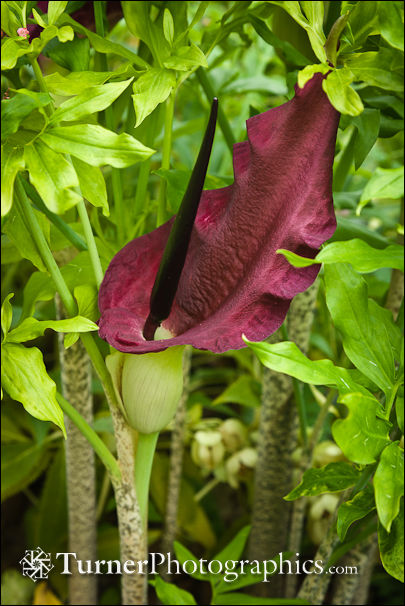 Nooksack Falls is a popular tourist destination along the Mount Baker Highway just a few miles east of the tiny town of Glacier, Washington. The usual vantage point is from the north side of the river and at the top of the falls. There’s a stout fence to keep people from accidentally falling off the cliff and to discourage people from getting too close to the edge.
Nooksack Falls is a popular tourist destination along the Mount Baker Highway just a few miles east of the tiny town of Glacier, Washington. The usual vantage point is from the north side of the river and at the top of the falls. There’s a stout fence to keep people from accidentally falling off the cliff and to discourage people from getting too close to the edge.
I’ve photographed the falls several times in the past 20 years and we almost always take out-of-town visitors there when we head to the mountains. It’s the largest waterfall in the county and very accessible.
However, you can’t see the whole falls from the standard observation point. For years, I’ve looked across the river, and across Wells Creek which flows into the Nooksack at the base of the falls. There’s a moss-covered boulder field above the creek and river, drenched in spray from the falls. I’ve thought that there should be a way to get to the south side of the river, and down those mossy boulders to river level. I tried once a few years ago and didn’t make it, probably because I failed to plot a compass bearing to follow through the woods.
Today, pretty much on a whim, I decided to head to the falls again. This time I plotted a bearing on the topo map before heading out. I drove up the road to the Skyline Divide trailhead and parked at the second righthand switchback. From there it’s only a quarter mile, and about 400 feet down, to the base of the falls. Following my compass I headed through the woods, carpeted with a dense layer of stairstep moss and decaying logs.
I came to a vantage point on the canyon rim overlooking the falls and photographed from there. Then I scouted a route down the cliff to the boulder field below. I scrambled down and photographed from several vantage points. The photo here is one of my favorites.
I haven’t processed them yet, but I shot a couple of multi-frame panoramas to stitch together. I’m thinking a big print might be nice. Since I knew how big my subject was, I only carried two lenses, 24-105 and 16-35, and used them both. Scrambling down and up with a tripod in hand was a little dicey, but never really dangerous and well worth the effort.
Now I can cross “see Nooksack Falls from the other side” off my to-do list.



 One of the greatest achievements a young man can achieve is earning his Eagle Scout award. It requires learning outdoor skills, physical fitness, good citizenship, and demonstrated leadership ability. It also usually takes the support of friends and family over a period of several years.
One of the greatest achievements a young man can achieve is earning his Eagle Scout award. It requires learning outdoor skills, physical fitness, good citizenship, and demonstrated leadership ability. It also usually takes the support of friends and family over a period of several years.  Every garden should have at least one plant that makes every visitor stop in their tracks and ask “what’s that?” Maybe its even one your spouse questions why you’d grow it.
Every garden should have at least one plant that makes every visitor stop in their tracks and ask “what’s that?” Maybe its even one your spouse questions why you’d grow it.  Nooksack Falls is a popular tourist destination along the Mount Baker Highway just a few miles east of the tiny town of Glacier, Washington. The usual vantage point is from the north side of the river and at the top of the falls. There’s a stout fence to keep people from accidentally falling off the cliff and to discourage people from getting too close to the edge.
Nooksack Falls is a popular tourist destination along the Mount Baker Highway just a few miles east of the tiny town of Glacier, Washington. The usual vantage point is from the north side of the river and at the top of the falls. There’s a stout fence to keep people from accidentally falling off the cliff and to discourage people from getting too close to the edge.